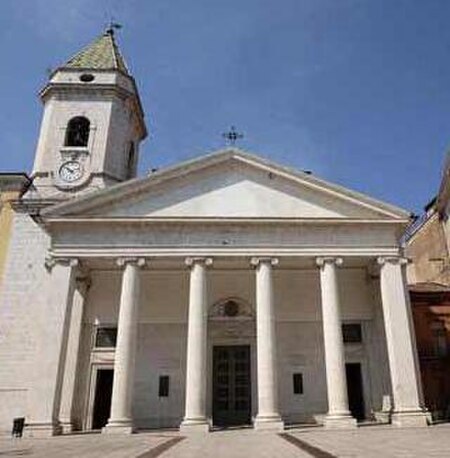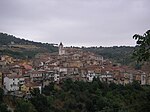Roman Catholic Archdiocese of Campobasso-Boiano
Roman Catholic dioceses in Molise

The Archdiocese of Campobasso-Boiano (Latin: Archidioecesis Campobassensis-Boianensis) is a Latin Church archdiocese of the Catholic Church in the commune of Campobasso, the capital of the province of Campobasso, in the region of Molise in Southern Italy. It became an archdiocese in 1973 and a metropolitan see in 1976. In 1927, the episcopal seat and residence of the bishop of the diocese of Boiano was transferred to Campobasso, and the diocese was renamed diocese of Boiano-Campobasso. It was suffragan (subordinate) ecclesiastically to the archdiocese of Benevento.
Excerpt from the Wikipedia article Roman Catholic Archdiocese of Campobasso-Boiano (License: CC BY-SA 3.0, Authors, Images).Roman Catholic Archdiocese of Campobasso-Boiano
Piazzetta Palombo, Campobasso
Geographical coordinates (GPS) Address Nearby Places Show on map
Geographical coordinates (GPS)
| Latitude | Longitude |
|---|---|
| N 41.5604 ° | E 14.6597 ° |
Address
Cattedrale Santissima Trinità
Piazzetta Palombo
86100 Campobasso
Molise, Italy
Open on Google Maps






